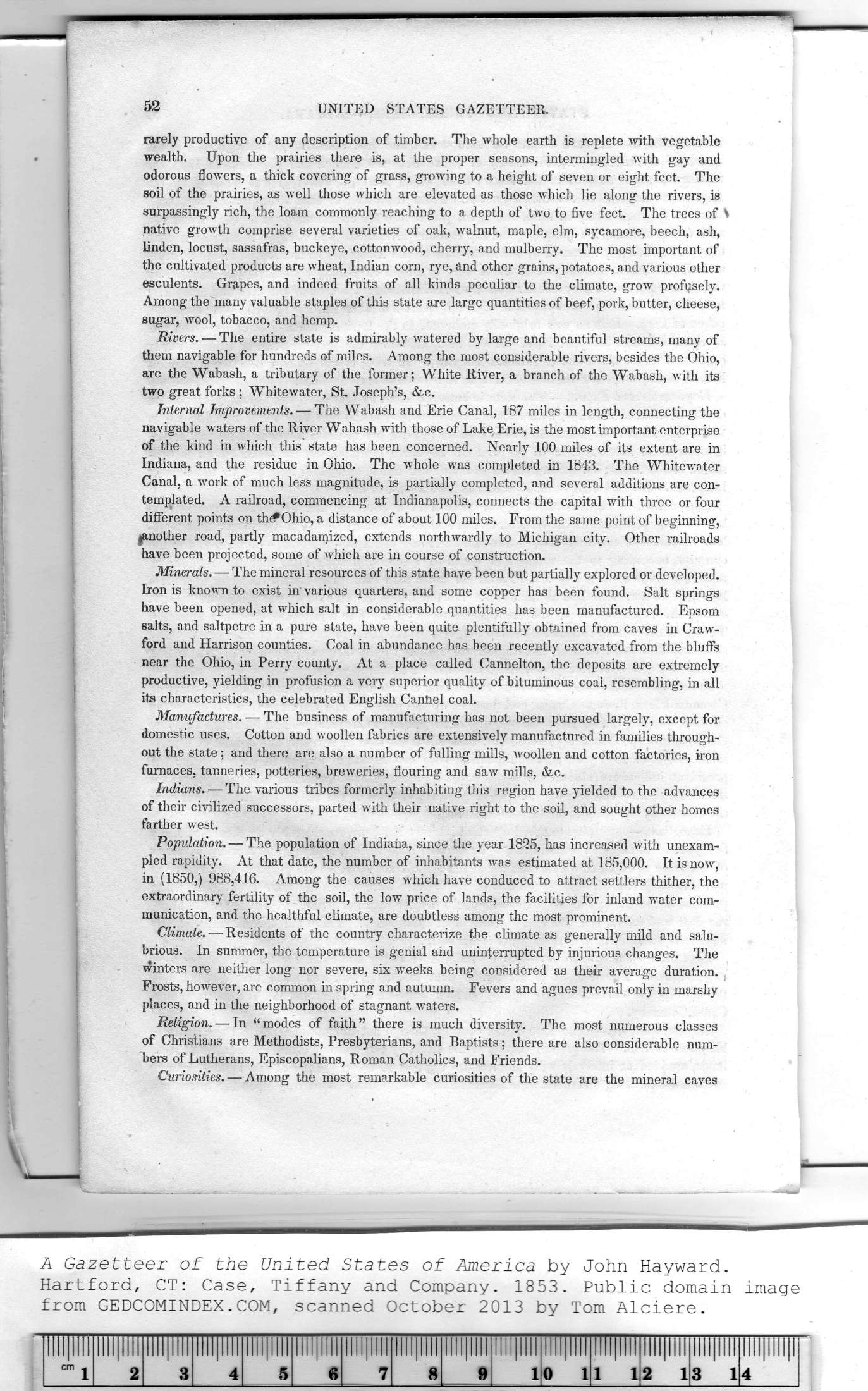|
|
Note: Ctrl and + increases the font size of the text below, Ctrl and - decreases it, and Ctrl and 0 resets it to default size.
fcitn
52 UNITED STATES GAZETTEER.
rarely productive of any description of timber. The whole earth is replete with vegetable
wealth. Upon the prairies there is, at the proper seasons, intermingled with gay and
odorous flowers, a thick covering of grass, growing to a height of seven or eight feet. The
soil of the prairies, as well those which are elevated as those which lie along the rivers, is
surpassingly rich, the loam commonly reaching to a depth of two to five feet. The trees of S
native growth comprise several varieties of oak, walnut, maple, elm, sycamore, beech, ash,
linden, locust, sassafras, buckeye, cottonwood, cherry, and mulberry. The most important of
the cultivated products are wheat, Indian corn, rye, and other grains, potatoes, and various other
esculents. Grapes, and indeed fruits of all kinds peculiar to the climate, grow profusely.
Among the many valuable staples of this state are large quantities of beef, pork, butter, cheese,
sugar, wool, tobacco, and hemp.
Rivers. — The entire state is admirably watered by large and beautiful streams, many of
them navigable for hundreds of miles. Among the most considerable rivers, besides the Ohio,
are the Wabash, a tributary of the former; White River, a branch of the Wabash, with its
two great forks ; Whitewater, St Joseph's, &c.
Internal Improvements. — The Wabash and Erie Canal, 187 miles in length, connecting the
navigable waters of the River Wabash with those of Lake Erie, is the most important enterprise
of the kind in which this state has been concerned. Nearly 100 miles of its extent are in
Indiana, and the residue in Ohio. The whole was completed in 1843. The Whitewater
Canal, a work of much less magnitude, is partially completed, and several additions are con-
templated. A railroad, commencing at Indianapolis, connects the capital with three or four
different points on tin*Ohio, a distance of about 100 miles. From the same point of beginning,
another road, partly macadamized, extends northwardly to Michigan city. Other railroads
have been projected, some of which are in course of construction.
Minerals. — The mineral resources of this state have been but partially explored or developed.
Iron is known to exist in various quarters, and some copper has been found. Salt springs
have been opened, at which salt in considerable quantities has been manufactured. Epsom
salts, and saltpetre in a pure state, have been quite plentifully obtained from caves in Craw-
ford and Harrison counties. Coal in abundance has been recently excavated from the bluffs
near the Ohio, in Perry county. At a place called Cannelton, the deposits are extremely
productive, yielding in profusion a very superior quality of bituminous coal, resembling, in all
its characteristics, the celebrated English Canhcl coal.
Manufactures. — The business of manufacturing has not been pursued largely, except for
domestic uses. Cotton and woollen fabrics are extensively manufactured in families through-
out the state; and there are also a number of fulling mills, woollen and cotton factories, iron
furnaces, tanneries, potteries, breweries, flouring and saw mills, &c.
Indians. — The various tribes formerly inhabiting this region have yielded to the advances
of their civilized successors, parted with their native right to the soil, and sought other homes
farther west.
Population. — The population of Indiana, since the year 1825, has increased with unexam-
pled rapidity. At that date, the number of inhabitants was estimated at 185,000. It is now,
in (1850,) 988,416. Among the causes which have conduced to attract settlers thither, the
extraordinary fertility of the soil, the low price of lands, the facilities for inland water com-
munication, and the healthful climate, are doubtless among the most prominent.
Climate. — Residents of the country characterize the climate as generally mild and salu-
brious. In summer, the temperature is genial and uninterrupted by injurious changes. The
winters are neither long nor severe, six weeks being considered as their average duration.
Frosts, however, are common in spring and autumn. Fevers and agues prevail only in marshy
places, and in the neighborhood of stagnant waters.
Religion. — In “modes of faith" there is much diversity. The most numerous classes
of Christians are Methodists, Presbyterians, and Baptists; there are also considerable num-
bers of Lutherans, Episcopalians, Roman Catholics, and Friends.
Curiosities. — Among the most remarkable curiosities of the state are the mineral caves
|
Illllllll |
Illllllll |
llll|llll |
Illllllll |
Illllllll |
llll|llll |
Illllllll |
llll|llll |
Illllllll |
Illllllll |
Illllllll |
Illllllll |
Illllllll |
Illllllll |
!l!l|lll!|l |
|
cm j |
2 |
3 |
4 |
5 |
6 |
7 |
8 |
9 |
1 |
0 1 |
1 1 |
2 1 |
3 1 |
4 |
|
